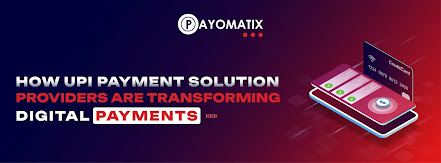A Guide to Payment Gateway Integration for 2025: Everything Businesses Need to Know - Payomatix
In the rapidly evolving digital marketplace, integrating a robust payment gateway is essential for businesses aiming to provide seamless and secure online transactions. This guide delves into the essentials that businesses need to consider for effective payment gateway integration.
What Is a Payment Gateway?
A payment gateway is a technology that securely facilitates online transactions by transferring payment information from the customer to the merchant and then to the bank or payment processor. It acts as a digital bridge, ensuring that sensitive financial data remains encrypted and protected throughout the transaction process.
Read our latest blog: how to streamline your payment gateway integration in 2025. Learn about types, benefits, challenges, and future trends.
Types of Payment Gateway Integration
- Hosted Payment Gateways
- Self-Hosted Payment Gateways
- API-Based Gateways
- Localized Gateways
Why Is Payment Gateway Integration Crucial for Businesses in 2025?
- Enhanced Customer Experience: Modern consumers expect quick and hassle-free payment options. An integrated payment gateway streamlines the checkout process, reducing cart abandonment rates and fostering customer loyalty.
- Increased Conversion Rates: A seamless payment process encourages repeat purchases, directly impacting revenue growth.
- Advanced Security Measures: With the rise in cyber threats, a secure payment gateway safeguards sensitive customer data, building trust and ensuring compliance with industry standards.
Steps to Integrate a Payment Gateway
- Assess Your Business Needs: Evaluate your transaction volume, customer preferences, and technical capabilities to select the most suitable payment gateway.
- Choose the Right Payment Gateway Provider: Look for a provider that offers compatibility with your platform, supports multiple currencies and payment methods, and provides reliable customer support.
- Obtain Necessary Certifications: Ensure compliance with regulations such as PCI DSS to maintain transaction security and customer trust.
- Implement API or Plugin Integration: Depending on your technical resources, integrate the payment gateway using APIs for customization or pre-built plugins for platforms like Shopify or WooCommerce.
- Test and Optimize: Conduct thorough testing to identify and resolve any technical issues, ensuring a smooth user experience.
Challenges in Payment Gateway Integration
- Compatibility Issues: Ensuring the gateway integrates seamlessly with your existing website or mobile app can be complex.
- Security Compliance: Maintaining compliance with evolving security standards requires continuous monitoring and updates.
- Technical Complexity: The integration process may demand significant technical expertise, especially for customized solutions.
Conclusion
As we approach 2025, integrating a payment gateway is not just a technical requirement but a strategic move to enhance customer satisfaction and drive business growth. By understanding the types of payment gateways and following a structured integration process, businesses can offer secure, efficient, and user-friendly payment solutions that meet the evolving expectations of their customers.
For more detailed insights and guidance on payment gateway integration, consider exploring resources from industry experts like Payomatix.




Comments
Post a Comment